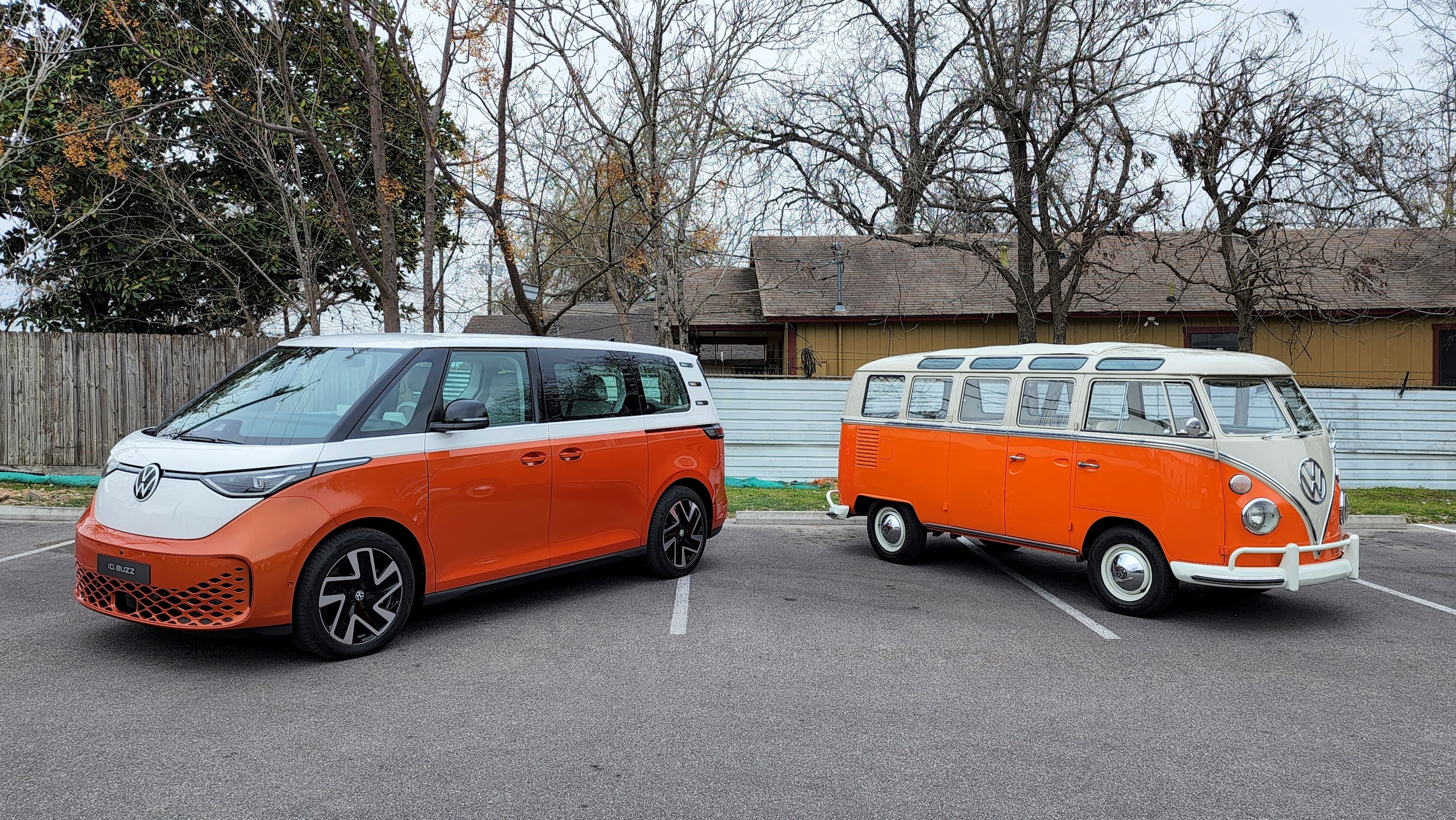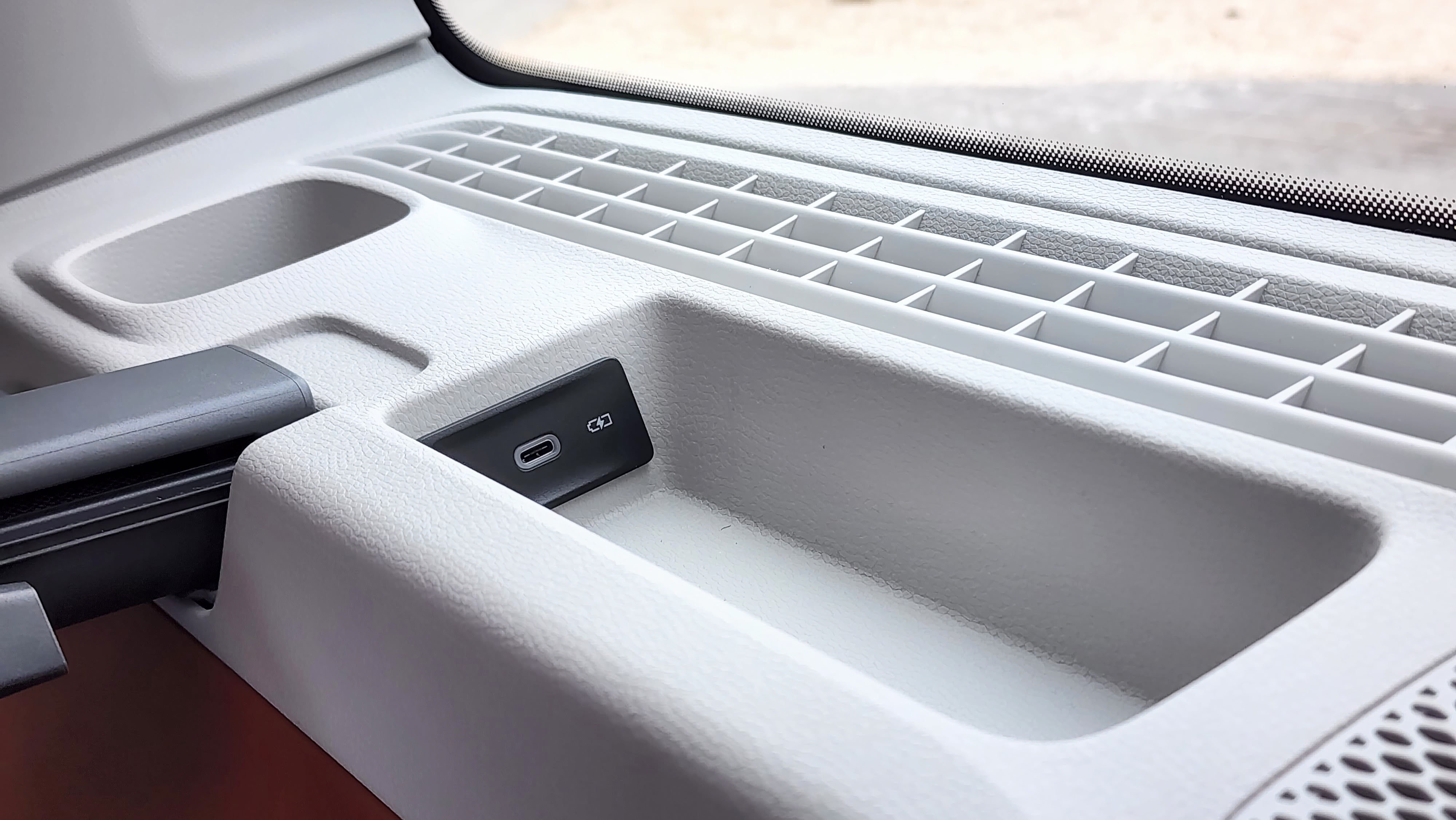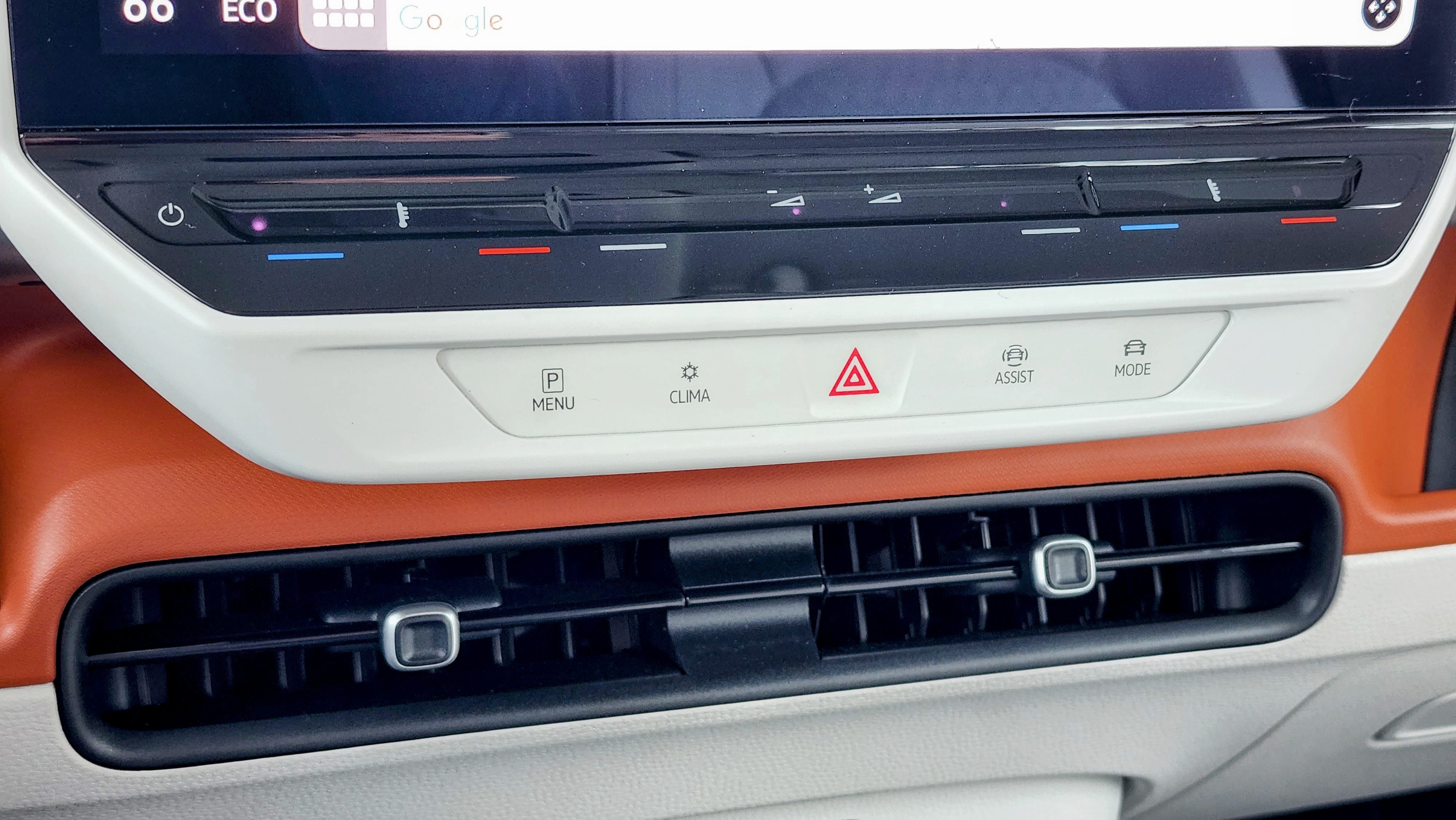Volkswagen ID Buzz first look: the icon is back, with electric power and Easter eggs
A stylish retro-modern EV

After years of concepts and months of leaks, Volkswagen has finally unveiled its long awaited electric microbus – the ID Buzz. Better yet, we were given the opportunity to experience the ID Buzz in person at SXSW in Austin.
Now, before you get too excited, we weren't able to drive the ID Buzz yet – just see it and ride in it. Regardless, here are our first impressions after spending about an hour with it.
Historically, VW's microbus is a big deal. This is especially true in the US, where it was a significant cultural icon from the 60's to the 80's, but was discontinued in 2002 after the fourth generation (T4 / Eurovan).
As a result, these vans – and especially the Westfalia-branded camper variant – are still highly sought after to this day. While other markets enjoyed VW's fifth and sixth generation vans, North America was left wanting.
It uses the same MEB platform as the ID.3 and ID.4
But the wait is almost over. While we were able to take a look at the short wheelbase ID Buzz passenger van for Europe (launching Q3 2022), a long wheelbase version with an optional third row of seats is coming to North America sometime in 2024 – including a California-branded camper variant. The ID Buzz is also available as a cargo van in Europe, but that's not destined for the US – chicken tax and all.

The ID Buzz is built on VW's Modular Electric-drive Toolkit (MEB) platform, shared with EVs like the ID.3 and ID.4. As such, the ID Buzz's specs are similar to its siblings, down to the 82kWh (77kWh usable) battery pack.
Initially, it will be available as a RWD model with 201hp (150kW) and 228 lb.ft (309Nm) of torque, with AWD coming later, adding an extra motor in front with 107hp (80kW) and 119 lb.ft (161Nm) of torque.
Sign up for breaking news, reviews, opinion, top tech deals, and more.
While we don't have any official range figures yet, the ID Buzz is expected to deliver between 220 and 250 miles (350-400km) of real-world range. Obviously, that's not spectacular, but it's probably enough for the majority of use cases, including road trips.
It also supports 11kW AC charging and 170kW DC fast charging with plug-and-charge capability. That's 5-80% in 30 minutes – not too shabby.









It's retro and modern outside
Design-wise, the ID Buzz's exterior pays homage to the original Type 2 microbus, with a two-tone paint job, V-shaped hood (bonnet), and large VW emblems front and back.
The top half, roof, and hood are painted white, and the bottom half is painted orange, yellow, green, or blue. But unlike the original van, the ID Buzz's windows surrounds aren't painted white (they're black), and its headlights aren't round.
Still, it works. The lineage is obvious, and the ID Buzz looks great. Interesting details abound – we like how the headlights stretch upward along the paintline under the A pillar, like the chrome trim on the original.
Ditto the shape of the front quarter windows, which echo the vent windows on the microbus. Likewise, the D pillar features three horizontal trim pieces reminiscent of the engine cooling vents on the second-generation (T2) van.
The ID Buzz isn't very big for a van. At just 185.5 in (4.71m) long, the short wheelbase version is about the same length as the Tesla Model 3. But the 20-inch wheels and short overhangs make it look even smaller.
What's odd about the ID Buzz's design is the grille-like opening in the lower half of the front bumper, which seems large for an EV. Turns out it's mostly cosmetic, with only half of the holes being used for ADAS sensors and cooling.













It's spacious and modular inside
Inside, the ID Buzz is vast. By default, the short wheelbase version gets a two-row 2 + 3 seating configuration, with an optional three-row 2 + 2 + 2 arrangement (six captain's chairs). The long wheelbase model will also offer a three-row 2 + 3 + 2 layout.
Either way, the bench seat folds 60/40, moves fore and aft, and appears to be removable. Cargo space is a massive 39.6 cu.ft (1,121L) with the seats up, 77.8 cu.ft (2,205L) with the seats down.
The ID Buzz's interior is just as unique as the exterior. It's mostly white (seats, headliner, door panels, steering wheel), with colored accents matching the outside color (orange, yellow, green, or blue) inset into the dashboard, door panels, and cargo area.
The floor, windshield trim, rear tailgate, seat pedestals, seat belts, and some controls are black, but there are also silver accents throughout (door pulls, dashboard, and center console).
And did we mention there's also open-pore wood on the dashboard? Yes, this sounds like a mess of colors and (recycled) materials, but honestly, it all comes together really well.

The ID Buzz's interior looks just as great as the exterior. VW even includes some fun easter eggs, like the smiley face behind the door pulls, the ID Buzz silhouette embossed in the orange panels in the cargo area, and the Beetle-like white straps attached to the B pillars.
You'll find two cup holders behind a panel in the lower middle of the dashboard. The center console is removable, and includes a pull out bottle holder and two USB Type-C ports.
Speaking of which, there are two more USB Type-C ports (along with a Qi wireless phone charger) next to the steering wheel, one in the passenger-side door, one in each sliding door, one on each side of the cargo area, and one by the rear view mirror (for a dashcam).
Those sliding doors are power-operated, and so is the tailgate, but unlike most other modern vans, the ID Buzz's sliding door windows don't open, which is unfortunate.
On the plus side, second row passengers get a pair of airplane-style folding trays mounted on the backs of the front seats. It's also worth mentioning that the front seats are power-operated, include a massaging function, and are also heated and (presumably) ventilated.








It packs familiar tech and features
Most of the ID Buzz's controls and screens carry over from the ID.3 and ID.4, including the 5.3-inch instrument display, 10-inch (and optionally 12-inch) center touchscreen, three-spoke steering wheel, window and mirror switches – and even all those annoying capacitive buttons.
The gear selector has been relocated from the right side of the instrument display to the right stalk, while the wiper controls have moved over to the left stalk.
Obviously, when it comes to tech, the ID Buzz also follows in the footsteps of its ID.3 and ID.4 siblings. It features VW's IQ.DRIVE advanced driver assistance (ADAS) and safety package, self parking, a 360-degree view, LTE connectivity, over-the-air (OTA) updates, WiFi hotspot functionality, wired and wireless Apple CarPlay and Android Auto support, the Hello ID voice assistant, and ID.Light for visual cues.
This driving and safety tech is enabled by multiple cameras (in the front, at the bottom of the windshield, on the side mirrors, and in the back) plus ultrasonic and radar sensors all around.
Overall, the ID Buzz delivers a comprehensive set of tech features, but it doesn't really break any new ground. We were hoping for additional functionality, like the ability to stream video on the infotainment display (Tesla style), or power appliances from the battery pack (hello, Ioniq 5).










- These are the best dash cams you can buy right now
It's super quiet and comfortable
VW took us on a 20-minute ride around Austin – away from the downtown hustle and bustle of SXSW – to experience the ID Buzz in motion. This urban loop mostly included surface streets and a brief jaunt on the highway across the Colorado river.
As a passenger, the electric microbus basically feels a lot like the ID.4 RWD. Based on a single acceleration run, we'd peg the ID Buzz's 0-60mph (96km/h) time in the 9-second range.
Obviously, there's more to an EV's performance than acceleration. The ID Buzz's ride is firm but compliant, and handling seems well sorted – especially for a van – thanks no doubt to the low center of gravity afforded by the large battery pack mounted below the floor.
It appears to use the same strut-type front and multi-link rear suspension setup, and the same front disc and rear drum brakes as the ID.3 and ID.4.

We sat in the ID Buzz's front passenger seat, and one of our colleagues sat behind the driver in the bench seat, and we both found the seats comfortable enough to be road-trip worthy.
Leg, shoulder, and headroom are superb, and so is visibility – as you'd expect from the high seating position. But what struck us the most is how quiet the ID Buzz is compared to a typical ICE (internal combustion engine) passenger van.
Ultimately, our brief time with the ID Buzz left us extremely impressed. VW's done an excellent job creating a modern electric successor to the iconic microbus.
Still, without range and pricing details – and especially specifics about the long-wheelbase version coming to North America – it's hard to draw an accurate conclusion. As such, we'll reserve our final verdict for when we drive the US-market ID Buzz next year.

Myriam Joire (tnkgrl) was born wearing combat boots and holding a keyboard. Moments later she picked up a soldering iron. On weekends, she rally-raced with her father. She's been stomping, typing, hacking, and driving ever since. After spending years being a code-monkey in the video game industry, she joined Engadget as Senior Mobile Editor and later Pebble as Chief Evangelist. Today she hosts the weekly Mobile Tech Podcast, makes videos on YouTube, writes about tech and cars for TechRadar and other major publications, and advises startups on product/media strategy. She's based in San Francisco.